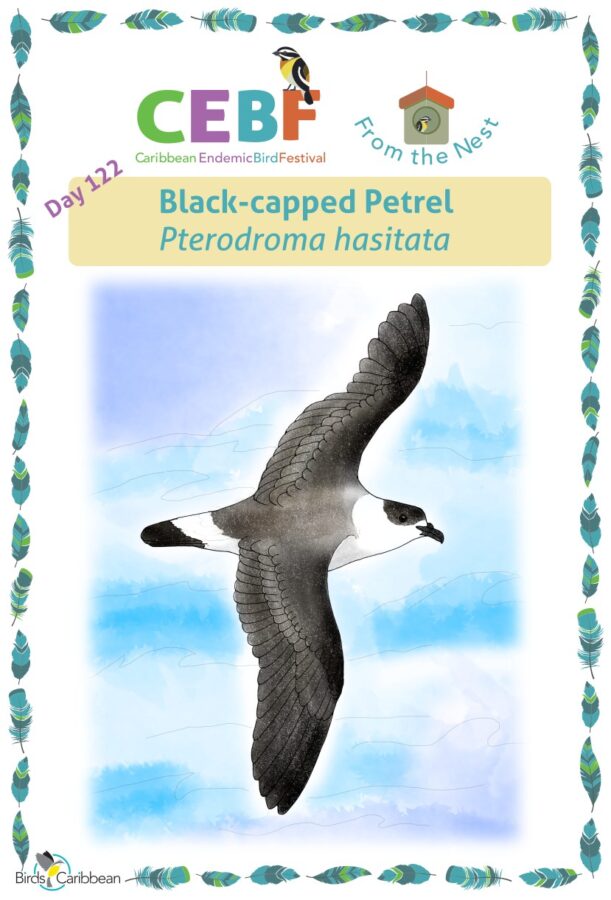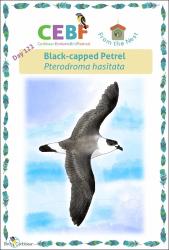/admin/item?itemID=1683d96e-bfdb-408c-b82d-cd9c4c87af5c
Endemic bird of the day : Black-capped Petrel
Type of Access
OpenMaterial Type
Infographic - PosterLanguage
EnglishCollection
- Colección general [2093]
- Recursos educativos [754]
Metadata
Show full item record| Abstract: | Caribbean Endemic Bird Festival (CEBF) day 122 poster, dedicated to the Black-capped Petrel. This mysterious seabird is the only seabird endemic to the Caribbean! Is is known as Diablotin (“the little devil”) in Haiti, the Dominican Republic, and Dominica, and Pajaro de la Bruja (“the witch’s bird”) in Cuba. It used to be widespread in the Caribbean but is now only known to nest in Haiti and the Dominican Republic, and possibly in Cuba, Dominica, Jamaica, and Guadeloupe. The Black-capped Petrel has long wings (dark above, white below), a white nape and rump, and the black cap that gives it its English name. Its diet is not well known but consists mostly of fish and squid. A pelagic seabird, it spends most of its life far out at sea and comes to land only to breed, between November and June. It is very difficult to see the Black-capped Petrel on land because it comes back to its burrow only after sunset and leaves long before sunrise, flying up and down river flyways in the dark. At sea, it is active day and night and lucky birdwatchers may see it near the coast of those Caribbean islands where it breeds. However, the best place to see a Black-capped Petrel would be just off the Guajira Peninsula in Colombia (where petrels from Hispaniola come to feed) and off Cape Hatteras, a hotspot for migrating petrels near the southeastern coast of the USA. There, you will notice its characteristic “roller-coaster” flight where it soars above the ocean and then dips to just above the water. The Black-capped Petrel has a small population (estimated at 2,000-4,000 individuals) and is considered globally endangered. The main threats affecting the species on land are the loss of forested habitat, introduced predators (mainly mongoose, feral cats, and feral dogs), and collision with telecommunication towers. At sea, the petrel is affected by pollution (such as mercury and plastics), production of marine energy (oil and gas, and offshore wind), and attraction to lighted ships. As a complement to the poster, a coloring sheet is included. |
| Author(s): | BirdsCaribbean
|
| Date: | 2023 |
| Published: | BirdsCaribbean |
| Citation: | BirdsCaribbean (2023). Endemic bird of the day: Black-capped Petrel. From the Nest (Day 122). BirdsCaribbean. Recuperado de: |
| URI: | https://bvearmb.do/handle/123456789/4015
|
Afiche / Poster



